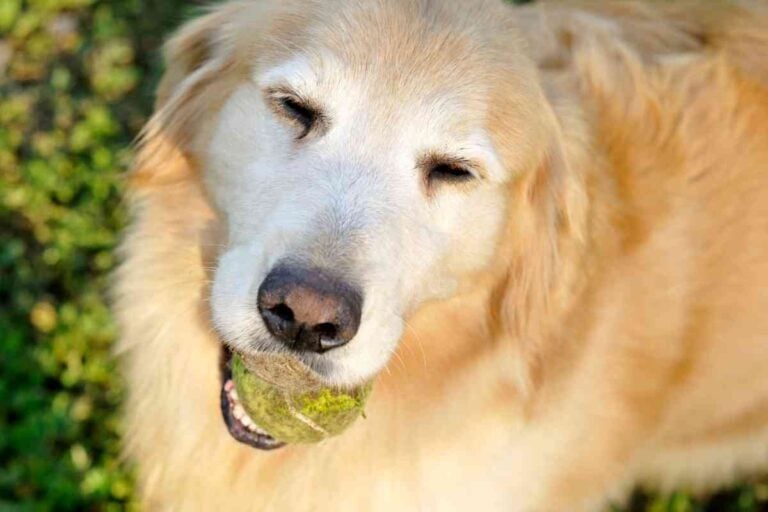Exercise Routines for Labrador Retrievers: Keeping Your Pup Healthy and Active
Labrador Retrievers are renowned for their boundless energy and affectionate nature, characteristics that necessitate a rich and varied regimen of activities to keep them happy and healthy.
As a Labrador owner, you are tasked with the delightful responsibility of ensuring your furry friend receives the right amount of physical and mental stimulation.

What are the best exercise routines for Labrador Retrievers?
Labrador Retrievers thrive with a balanced regimen of physical and mental exercises tailored to their energetic and intelligent nature. Fetch, swimming, flirt sticks, disc dog, and agility courses cater to their physical and mental needs. Incorporating puzzle toys and scent games can offer enriching mental stimulation, fostering a well-rounded exercise routine
In this guide, we explore a treasure trove of activities tailored for Labradors at every stage of their life, promising a balanced blend of joy, bonding, and well-being for your cherished companion.
Related Content:
- Common Genetic Issues in Labrador Retrievers: A Comprehensive Guide
- Adopting vs. Buying a Labrador Retriever: Which is the Better Choice?
- Labrador Retriever Clubs and Associations: Where to Find the Best Resources for Your Furry Friend
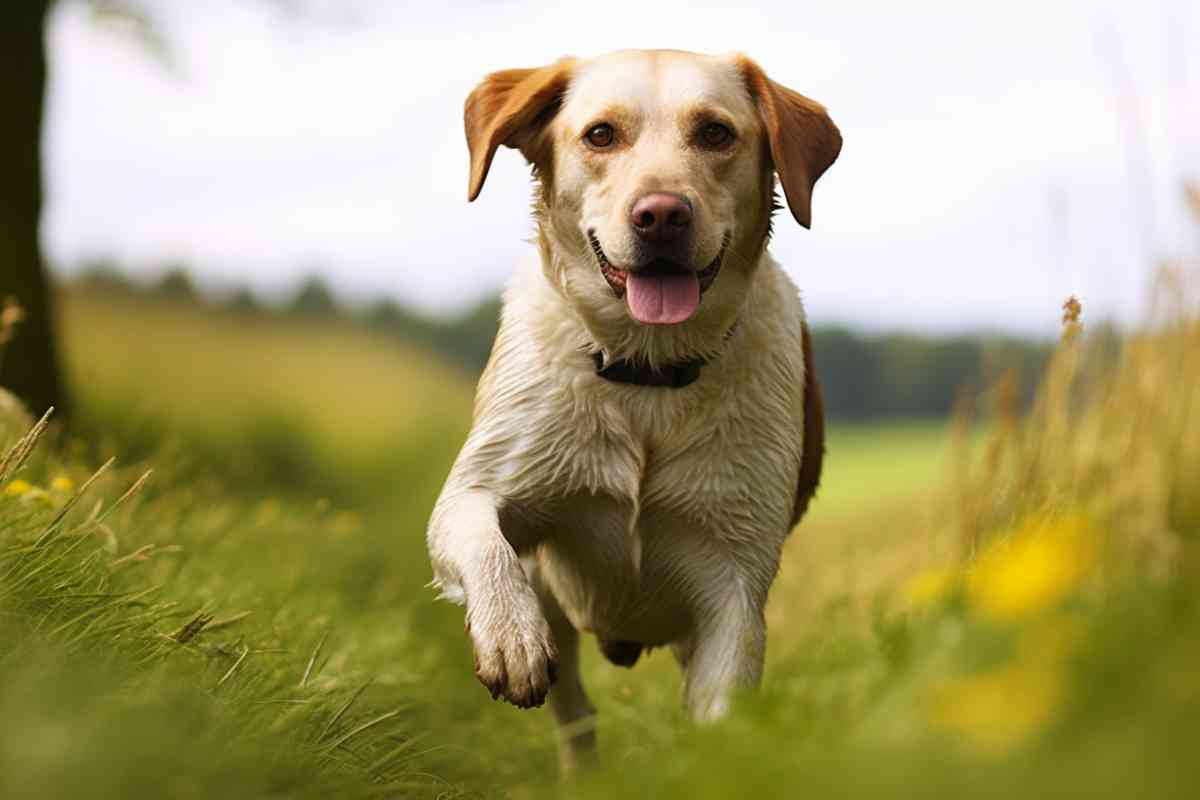
The Importance of Exercise for Labrador Retrievers
Labrador Retrievers are a working breed that require plenty of exercise to maintain their physical and mental health. Regular exercise not only helps them stay fit and healthy, but also provides mental stimulation that is crucial to their overall wellbeing. In this section, we will discuss the physical and mental health benefits of exercise for Labrador Retrievers.
Physical Health Benefits
Regular exercise is essential for keeping your Labrador Retriever healthy and preventing a range of health problems. Here are some of the physical health benefits of exercise for Labradors:
- Maintains healthy weight and prevents obesity
- Strengthens muscles and joints
- Improves cardiovascular health and reduces the risk of heart disease
- Reduces the risk of arthritis and diabetes
- Increases endurance and stamina
- Reduces panting and other symptoms of heat exhaustion
- Reduces the risk of hip dysplasia and other joint problems
Mental Health Benefits
In addition to physical health benefits, regular exercise also has numerous mental health benefits for Labrador Retrievers. Here are some of the mental health benefits of exercise for Labradors:
- Provides mental stimulation and prevents boredom
- Reduces stress and anxiety
- Helps prevent destructive behavior
- Improves overall mood and wellbeing
- Helps satisfy their natural hunting and working instincts
Structured exercise routines that incorporate both physical and mental exercise are important for maintaining a healthy and happy Labrador Retriever. Positive reinforcement techniques can be used to encourage good behavior during exercise, and the 5 minute rule can be used to prevent over-exertion and possible developmental issues.
In conclusion, exercise is a crucial part of a Labrador Retriever’s overall health and wellbeing. Regular exercise routines that incorporate both physical and mental exercise are important for maintaining a healthy and happy Labrador Retriever.

What Happens if Your Labrador Retriever Doesn’t Get Sufficient Exercise and Activity?
Pent-Up Energy and Behavioral Issues
A Labrador retriever that doesn’t receive sufficient exercise can end up having a lot of pent-up energy, which can often translate into undesirable behaviors. They might resort to chewing furniture, digging up the garden, or engaging in other destructive activities. Dog owners should be aware that a bored lab is a recipe for chaos.
Health Concerns
Lack of sufficient physical activity can lead to a range of health issues in adult Labrador retrievers. Obesity is a common consequence, which further exacerbates health problems such as arthritis and hip dysplasia, especially as they transition into being a senior dog. Ensuring regular workouts and activities can help in maintaining a healthy adult Labrador.
Emotional Well-being
Labradors are known for their affectionate and pleasing nature. A lack of physical activity can affect their emotional well-being, leading to symptoms of depression and anxiety. Incorporating activities that foster bonding, such as a game of fetch or tug-of-war, can significantly uplift their spirits and maintain a happy demeanor.
Cognitive Decline
As Labradors age, they are prone to cognitive decline. Engaging them in mentally stimulating activities, such as solving puzzle toys, can be a great way to keep their minds sharp. Dog owners can also set up an obstacle course in the backyard to encourage both physical and mental exercise, promoting a healthy mind in a healthy body.
How to Tell if a Labrador is Overweight
Overweight Labradors can face a myriad of health issues, including a higher risk of suffering from diseases such as diabetes, heart disease, and joint problems such as arthritis and hip dysplasia, especially as they transition into their senior dog years. Here are some tips to help you assess if your Labrador is carrying extra pounds:
Physical Examination
A simple yet effective method is to conduct a physical examination at home. An overweight Labrador will have excessive body fat, and their ribs, hips, and waistline may not be easily palpable or visible. A healthy adult Labrador retriever should have a well-defined waist when viewed from above.
Vet Consultation
If you are unsure about your Labrador’s weight status, consulting a vet is the best course of action. They can provide a professional assessment and guide you on the appropriate weight range for your lab based on their age, size, and health condition.
Behavioral Signs
Overweight Labradors might showcase lethargy and a lack of interest in activities they previously enjoyed, such as fetch, hiking, or tug-of-war. They might also exhibit difficulty in moving around, climbing stairs, or keeping up during walks.
Use of Puzzle Toys
Incorporating puzzle toys into their routine can not only serve as a mental stimulation but also help in controlling their food intake. These toys can be used to dispense meals slowly, preventing rapid eating and helping in weight management.
Regular Monitoring
It is advisable to regularly monitor your Labrador’s weight, especially as they grow from a lab puppy into an adult dog. Keeping a check on their weight and adjusting their diet and exercise routine accordingly can prevent obesity and ensure a healthy and happy life for your lab.
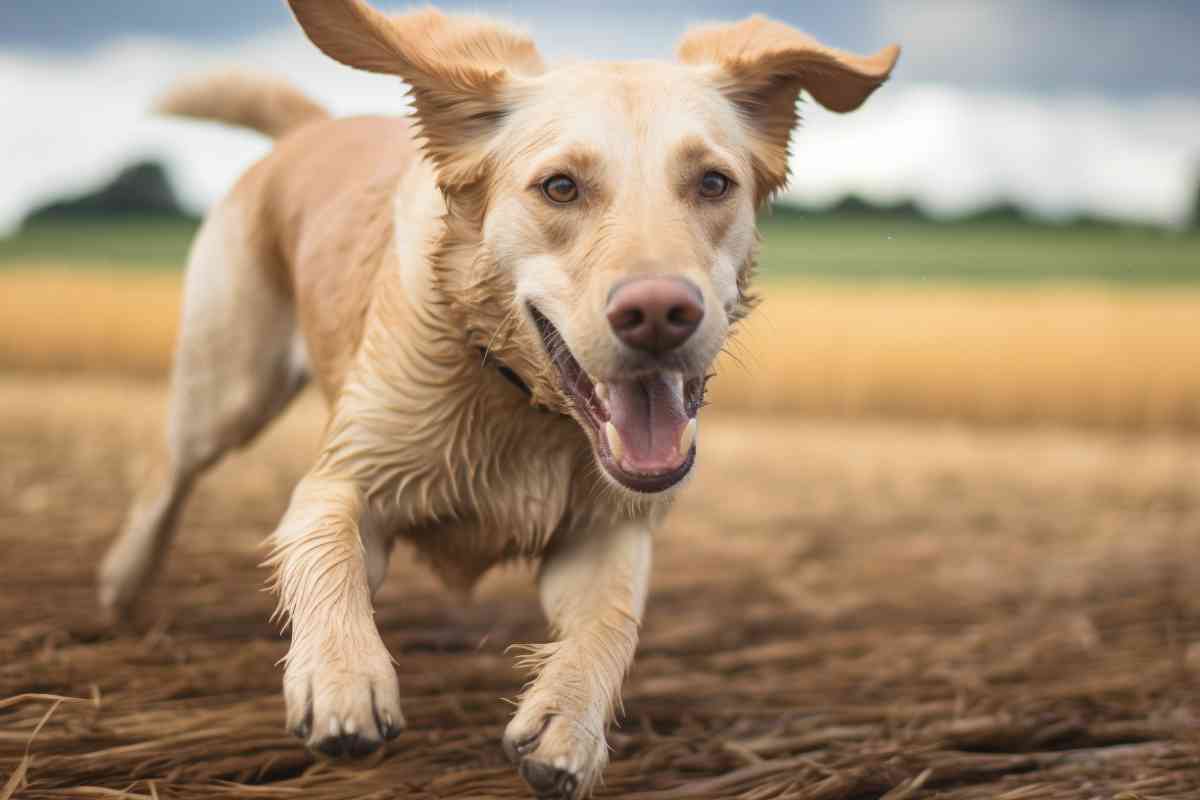
Exercise Needs for a Healthy Adult Labrador
Determining the appropriate amount of exercise for an adult Labrador retriever can be a nuanced task as their exercise needs can vary dramatically. It is essential for dog owners to note that Labradors from hunting lines may require a significantly higher level of physical activity compared to those bred to be pets or service animals.
Some Labradors will thrive with about an hour of exercise a day, engaging in activities such as a hike, fetch, or a tug-of-war session, which can be a great bonding activity. These activities can help in mitigating pent-up energy and promoting a healthy lifestyle for your lab.
On the other hand, there are Labradors that necessitate much more strenuous workouts, possibly demanding up to three or even four hours of exercise most days to maintain a calm and collected demeanor at home. Incorporating a variety of exercises including obstacle courses, tunnels, and puzzle toys can be a fantastic way to keep them engaged and physically active.
It is always recommended to observe your adult Labrador retriever closely to understand their unique needs and preferences when it comes to exercising. Tailoring the exercise routine to suit your lab can ensure a happy, healthy, and affectionate companion in your home.
Why a Daily Walk is Not Enough for a Labrador’s Exercise Needs
Understanding the Labrador’s Heritage
To comprehend why a daily walk might not suffice for a Labrador retriever, one must understand their heritage. Labradors were bred to work alongside fishermen, running and swimming for many hours at a time. This historical background means that a healthy adult Labrador inherently has high energy levels and a robust stamina.
The Risk of Hyperactivity and Behavioral Problems
Insufficient exercise can lead to hyperactivity and behavioral problems in Labradors. A Labrador that is not adequately exercised may exhibit signs of anxiety, destructive chewing, and other undesirable behaviors. Dog owners need to be cognizant of the fact that a simple walk, even if it is a long one, might not meet the exercise requirements of an active and energetic Labrador.
The Benefits of a Daily Walk
While a daily walk might not be enough, it certainly holds value in a Labrador’s daily routine. Walks are excellent for establishing a routine, providing mental stimulation, and training self-control. It allows them to explore their surroundings, offering a sensory feast of sights, smells, and sounds, which can be a great source of mental enrichment.
Incorporating Active Exercises
To ensure the well-being of a healthy adult Labrador, it is imperative to incorporate more vigorous exercises into their daily routine. Activities such as running, swimming, and engaging in games like fetch and tug-of-war can be more fulfilling for them. These activities not only cater to their physical needs but also offer a great bonding opportunity between the Labrador and the owner.
The Daily Walk for Labradors
A daily walk is a cornerstone in maintaining the well-being of a Labrador retriever. It is during these walks that a Labrador learns essential life skills such as walking on a loose leash without pulling, being calm, and non-reactive to people and other dogs.
Dog owners have the responsibility to instill these behaviors in their labs, fostering a controlled and enjoyable walking experience.
Loose Leash Walking
Teaching a Labrador to walk on a loose leash is vital. It not only ensures the safety of both the dog and the owner but also makes the walk more enjoyable. A Labrador that pulls constantly can make the walk stressful and less enjoyable, which might deter owners from maintaining a daily walking routine.
Socialization and Reactivity
During walks, Labradors are exposed to various stimuli, including other dogs and people. Teaching them to be calm and non-reactive fosters a peaceful and pleasant walking environment. It is a crucial part of their socialization process, helping them to become well-adjusted adults.

Setting the Rules of the Walk
It is up to the dog owner to decide the rules of the walk, including whether the Labrador takes the lead or follows. Some owners prefer a structured walk with the Labrador walking beside them, while others allow more freedom, letting the Labrador explore and take the lead at times.
Enjoyment for Both the Labrador and the Owner
Importantly, the walk should be a source of enjoyment for both the Labrador and the owner. Establishing a walk that is both disciplined and enjoyable ensures that it becomes a daily routine, rather than a chore. A happy walk fosters bonding and ensures that the Labrador receives the mental and physical stimulation they need daily.
Labrador Exercise Ideas
Swimming: The Ideal Activity for Labradors
A Breed for Water
Labradors were bred to be water dogs, making swimming an ideal activity for them. Their heritage as retrievers working in water-rich environments means they are naturally adept swimmers.
Physical Attributes
From their webbed feet to their rudder-like tail, Labradors are designed for the water. These physical attributes give them a natural advantage in swimming, allowing them to move efficiently and gracefully in water.
Moisture-Resistant Coat
Labradors possess a moisture-resistant coat. This unique feature enables them to swim in all kinds of weather, providing a level of protection that facilitates swimming any time of the year.
Beneficial for Health
Swimming is a low-impact exercise, making it a great option for Labradors prone to health issues like hip dysplasia and arthritis. It allows them to exercise without putting too much strain on their joints, promoting a healthy adult Labrador lifestyle.
Therapeutic Effects
Unlike other exercises like running, swimming doesn’t exacerbate conditions such as arthritis. In fact, it can potentially improve the symptoms, offering a therapeutic effect that is both enjoyable and beneficial for the Labrador.
Mental Stimulation
Swimming is not just physically stimulating but also offers mental enrichment. The sensation of being in water, exploring a different environment, can be a source of joy and mental stimulation for Labradors.
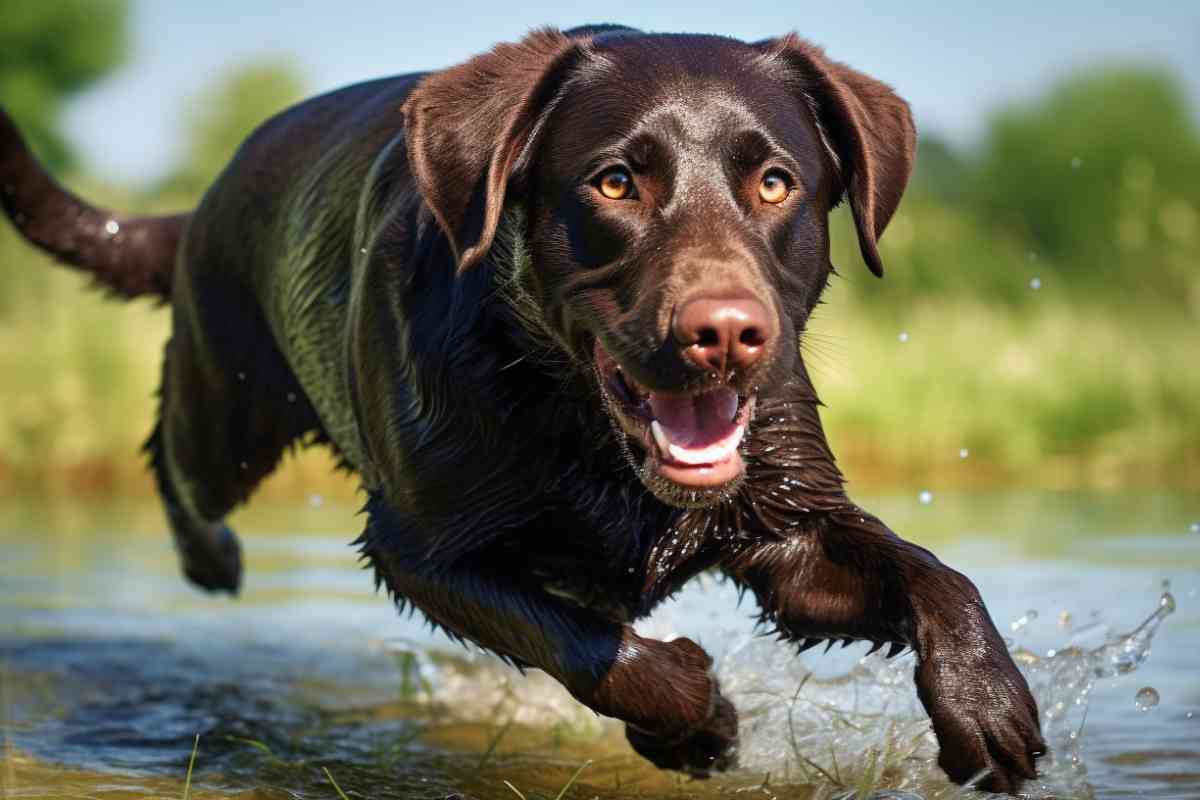
Fetch: A Quintessential Activity for Labradors
Aligning with Their Retrieving Heritage
Fetch is more than just a game for Labrador retrievers; it is an activity that aligns seamlessly with their retrieving heritage. Bred to retrieve, Labradors have a strong instinct to bring things back to their owner, making fetch a natural and enjoyable activity for them.
Efficient Exercise
Fetch is an activity where a Labrador can get substantial exercise with minimal effort from the owner. A few throws can have a Labrador running back and forth, helping to burn off pent-up energy and promoting a healthy adult Labrador lifestyle.
Encouraging Good Recall
Playing fetch also encourages good recall, a vital training aspect for Labradors. Since they are eager to return to their owner with the ball, it fosters a natural tendency to come back when called, enhancing their recall skills and obedience.
Considerations for Older Dogs
While fetch is a fantastic activity, dog owners should exercise caution when playing fetch with older Labradors or those with health issues like arthritis. Since Labradors love fetch so much, they can sometimes overexert themselves, leading to potential injuries.
Moderation for Senior Dogs
For senior dogs, it might be necessary to moderate the intensity and duration of the fetch sessions to prevent any strain on their joints. Incorporating fetch with other low-impact activities can ensure a balanced exercise routine that caters to their physical capabilities.
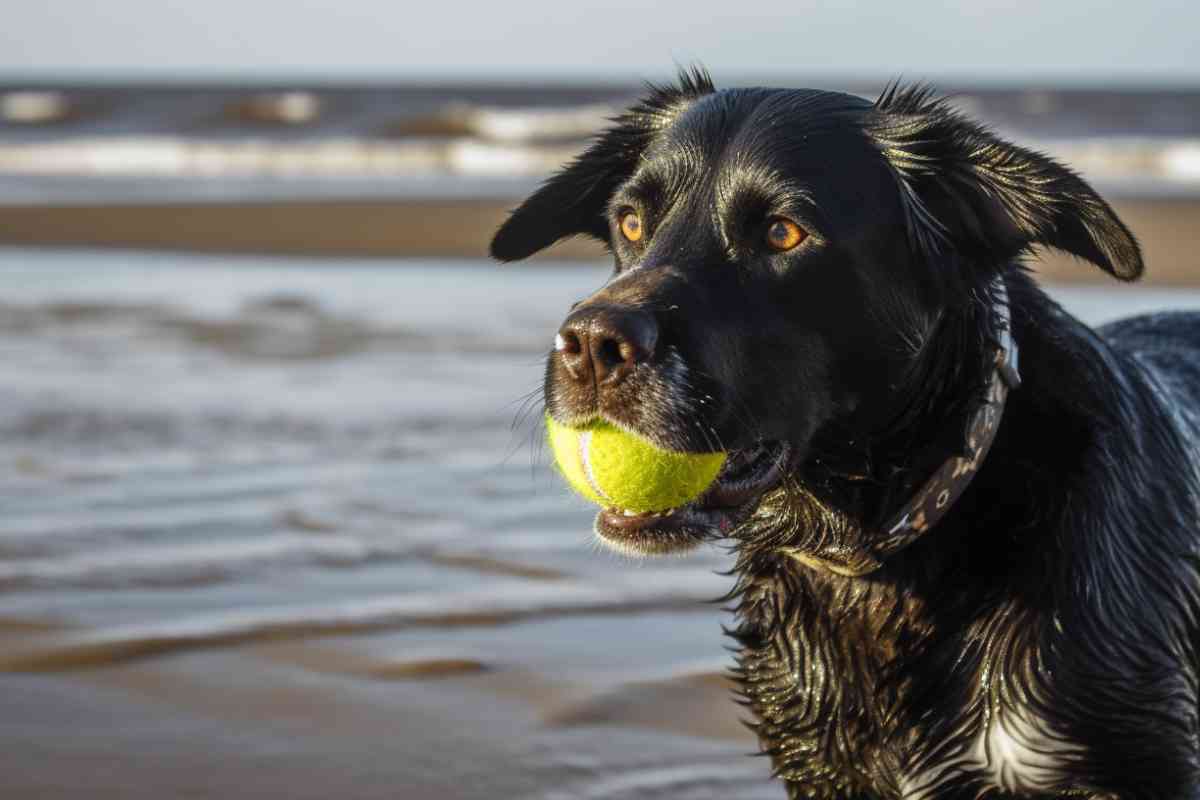
Dock Diving: Swimming with a Twist
Aligning with Their Natural Instincts
Dock diving is an activity that aligns perfectly with the natural instincts of a Labrador retriever. Historically bred to retrieve game from water, Labradors have an innate love for swimming and a strong desire to launch off a stand or shore to fetch, making dock diving a natural fit for them.
Safe and Enjoyable
This activity allows Labradors to enjoy the thrill of jumping without the harsh impact of landing on solid ground, which can be detrimental to their joints, especially for those prone to hip dysplasia or arthritis. The water provides a soft landing, ensuring the safety and well-being of the Labrador while they indulge in this exhilarating activity.
Competitive Fun
Dock diving is not just a recreational activity but also a competitive sport. Dog owners can enjoy getting into the competitive spirit of dock diving with their Labradors, offering a fantastic opportunity to bond with their furry friends while meeting fellow Labrador enthusiasts.
Community Engagement
Engaging in dock diving competitions opens up a vibrant community of Labrador lovers. It provides a platform to connect with like-minded individuals, share experiences, and learn from others, fostering a rich community experience centered around the love for Labradors.
Flirt Pole: Lots of Fun in a Small Space
Engaging Their Predatory Instincts
A flirt pole, essentially a pole with a lure attached to the end, is a fantastic tool for engaging the natural predatory instincts of a Labrador retriever. It mimics the movement of small prey, encouraging the Labrador to chase, grab, and capture, providing both mental and physical stimulation.
High-Energy Exercise
Labradors are known for their high energy levels. Utilizing a flirt pole can help in burning off some of that pent-up energy in a controlled environment. It allows them to engage in a vigorous activity, running and jumping, which is essential for maintaining a healthy adult Labrador lifestyle.
Training and Obedience
A flirt pole isn’t just a tool for play; it can also be a great training aid. Dog owners can use it to teach their Labradors various commands such as ‘sit’, ‘stay’, or ‘leave it’, incorporating obedience training into playtime, and fostering a well-behaved and disciplined Labrador.
Safe for Joint Health
While Labradors love to jump and play, activities that involve high jumps can be hard on their joints, especially for those prone to issues like hip dysplasia or arthritis. A flirt pole encourages controlled jumps, ensuring that the Labrador can enjoy jumping without putting undue stress on their joints.
Bonding Time
Using a flirt pole also offers a great bonding opportunity between the Labrador and the owner. It allows for interactive play, fostering a strong bond built on trust, affection, and mutual enjoyment, enhancing the relationship between the Labrador and the owner.
Disc Dog: Organized Fetch
Leveraging Their Love for Fetch
Disc dog, a sport where dogs fetch a frisbee thrown by their owner, is a fantastic activity for Labrador retrievers. Leveraging their inherent love for fetch, Labradors find as much joy in chasing a frisbee as they do a ball, making them natural candidates for this exhilarating activity.
Social and Friendly Nature
Labradors are known for their friendly and social nature. This trait makes them excellent companions in a disc dog field, where they can comfortably run and play without the typical territorial issues that some other breeds might exhibit. Their amicable disposition ensures a harmonious play environment, even with other dogs around.
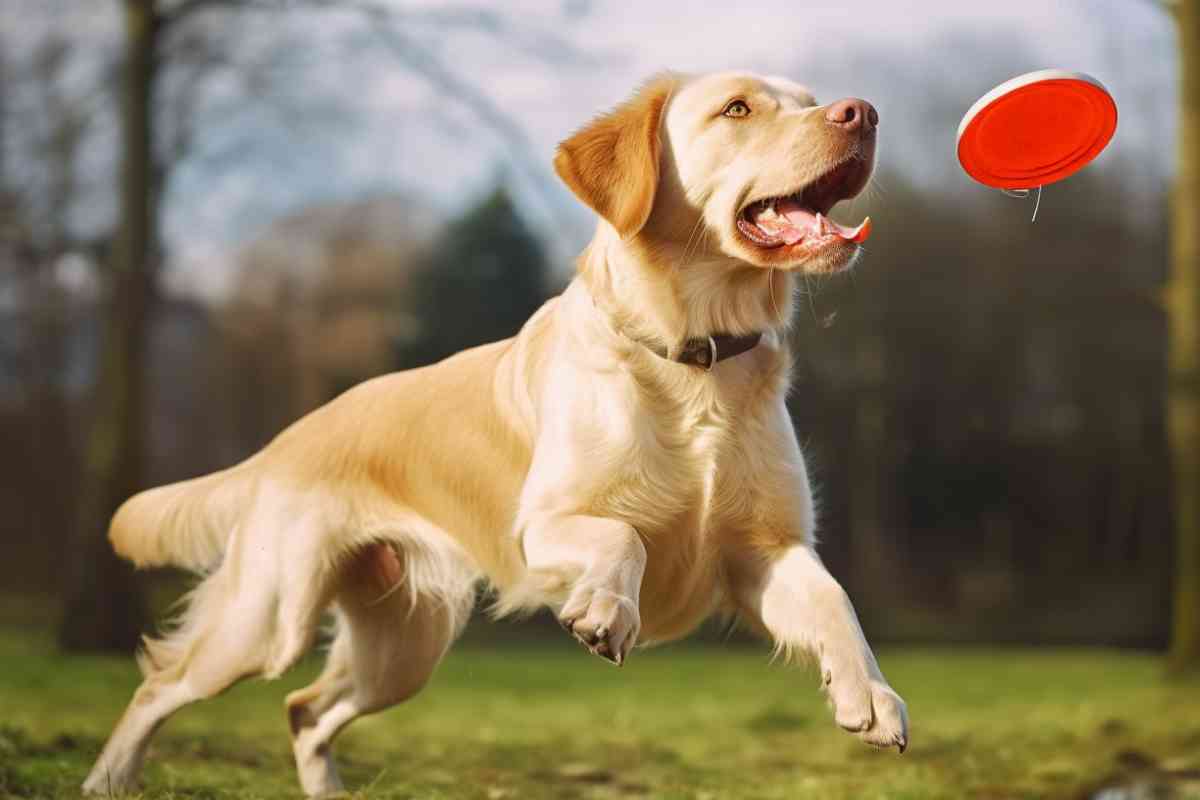
Community Engagement
Being an organized group activity, disc dog offers dog owners a wonderful opportunity to socialize and meet new people. It fosters a community of like-minded individuals who share a love for dogs and the sport, providing a vibrant and enjoyable social experience for both the Labradors and their owners.
Bonding and Training
Engaging in disc dog also offers a great bonding opportunity. It allows for a collaborative play experience, where the Labrador and the owner work together to achieve a common goal. Moreover, it can be a great training ground to enhance a Labrador’s agility, obedience, and responsiveness.
A Happy and Healthy Labrador
Disc dog promotes physical health, offering a high-energy activity that helps in keeping a Labrador fit and happy. The running, jumping, and catching involved in the sport ensure a well-exercised Labrador, promoting a healthy adult Labrador lifestyle.
Agility: An Unexpectedly Great Activity for Labs
Breaking Stereotypes
When it comes to agility, most people tend to think of breeds like Border Collies. However, Labrador retrievers can excel in agility as well, breaking the stereotype and showcasing their versatility in the agility ring.
Backyard Fun or Professional Engagement
Whether you are looking to engage professionally in agility competitions or simply have fun in your backyard with agility equipment, it stands as a great activity for Labradors. Setting up an obstacle course in your backyard can offer a fantastic playground for your lab to burn off some of that pent-up energy.
Competitive Agility
In competitive agility, the handler runs alongside the Labrador, guiding them through various obstacles and equipment. It fosters a deep bonding experience, where the Labrador and the owner work in unison, showcasing a harmonious partnership based on trust and training.
Backyard Agility
For those looking to keep it casual, backyard agility offers a relaxed environment to enjoy this activity. Dog owners can set up a course and teach their Labrador to run it independently, perhaps throwing a ball at the end of the course as a reward, encouraging them to complete the course swiftly and accurately.
Physical and Mental Stimulation
Agility offers a comprehensive workout, engaging both the physical and mental faculties of a Labrador. It encourages quick thinking, agility, and responsiveness, promoting a healthy adult Labrador lifestyle that is both active and mentally stimulated.
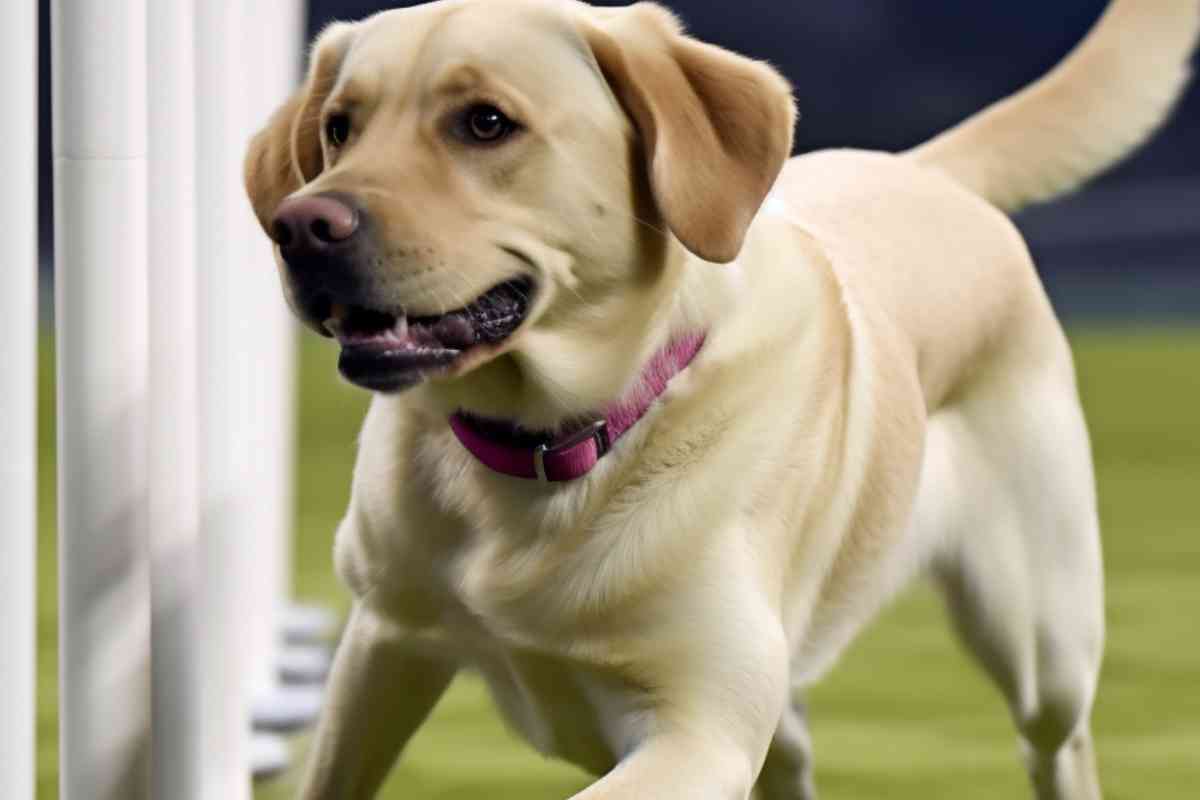
Running, Biking, or Skating: Perfect for High-Energy Labradors
Meeting the Exercise Needs of a Labrador
Ensuring a Labrador retriever gets enough exercise can be a challenging task, especially for the high-energy labs that require a couple of hours of physical activity daily. Unless one is an Olympic runner, meeting this need can be tough. However, activities such as running, biking, or skating alongside your Labrador can be the perfect solution.
High-Energy Activities for High-Energy Labs
For those very high-energy Labradors, running, biking, or skating can be excellent activities. Having your Labrador pull you on a skateboard or biking along with them ensures they get the vigorous exercise they need, without exhausting yourself in the process.
Safety and Monitoring
While engaging in these high-energy activities, it is paramount to monitor your Labrador to ensure they are not getting overtired or overexerted. Dog owners should keep a close eye on their Labrador’s physical cues and provide ample breaks to prevent any adverse effects on their health.
Building a Strong Bond
These activities not only cater to the physical needs of a Labrador but also foster a strong bonding experience. Running, biking, or skating together builds a relationship based on mutual enjoyment and trust, enhancing the companionship between the Labrador and the owner.
Playing with Other Dogs: The Smart Owner Hack for Energetic Labradors
Sociable and Affable Nature
Labrador retrievers are renowned for being one of the most affable and sociable breeds in the canine world. Their friendly disposition makes them excellent companions, not just for humans, but also for other dogs, showcasing a remarkable adaptability to different play styles and environments.
Thriving in Open Play Environments
While many dog breeds find it challenging to adapt to open play environments like dog parks, being selective about their playmates, this is often not the case for Labradors. They tend to thrive in such settings, happily interacting with dogs of various types, sizes, and play styles, exhibiting a harmonious and joyful play demeanor.
Effortless Energy Burn
A playdate or a trip to the dog park can be a wonderful way for your Labrador to burn off some pent-up energy. It offers them a fantastic opportunity to play and interact with other dogs, allowing them to expend energy without requiring much effort from the owner.
Not a Replacement for Structured Activities
While playing with other dogs is a great activity, it should not replace structured training, regular walks, and other forms of exercise. Dog owners should be aware that relying solely on playdates for exercise can lead to behavioral problems, as it lacks the structured environment that training and walks provide.
A Tool in the Exercise Kit
Incorporating playdates with other structured activities creates a balanced exercise regimen for a Labrador. It stands as a great tool in your kit of techniques for ensuring a healthy adult Labrador lifestyle, promoting both physical health and social well-being.

Mental Stimulation for Labradors: A Vital Aspect at Every Month of Age
Understanding the Labrador need for mental stimulation is crucial in fostering a well-rounded and happy dog. This necessity is especially pronounced during the puppy stage and as they transition into senior dogs, periods when physical exercise might be limited.
Puzzle Toys
Puzzle toys are a fantastic tool to engage a Labrador’s mind. These toys not only offer a fun challenge but also reward their problem-solving skills with a treat, providing a satisfying and enriching experience that garners praise from their owners.
Scenting and Nose Games
Engaging a Labrador in scenting and nose games can be a stimulating activity that taps into their natural instincts. It encourages them to use their keen sense of smell, offering a mentally enriching activity that can be enjoyed at any month of age.
Chew Toys
Chew toys are not just great for dental health but also offer a source of mental stimulation. They provide a satisfying activity for Labradors, helping to keep them engaged and happy, especially during the teething phase in puppies.
Obedience Training
Obedience training is a structured way to provide mental stimulation. It encourages Labradors to think and learn, fostering a disciplined and well-behaved dog. The training sessions, coupled with praise and treats, create a positive learning environment.
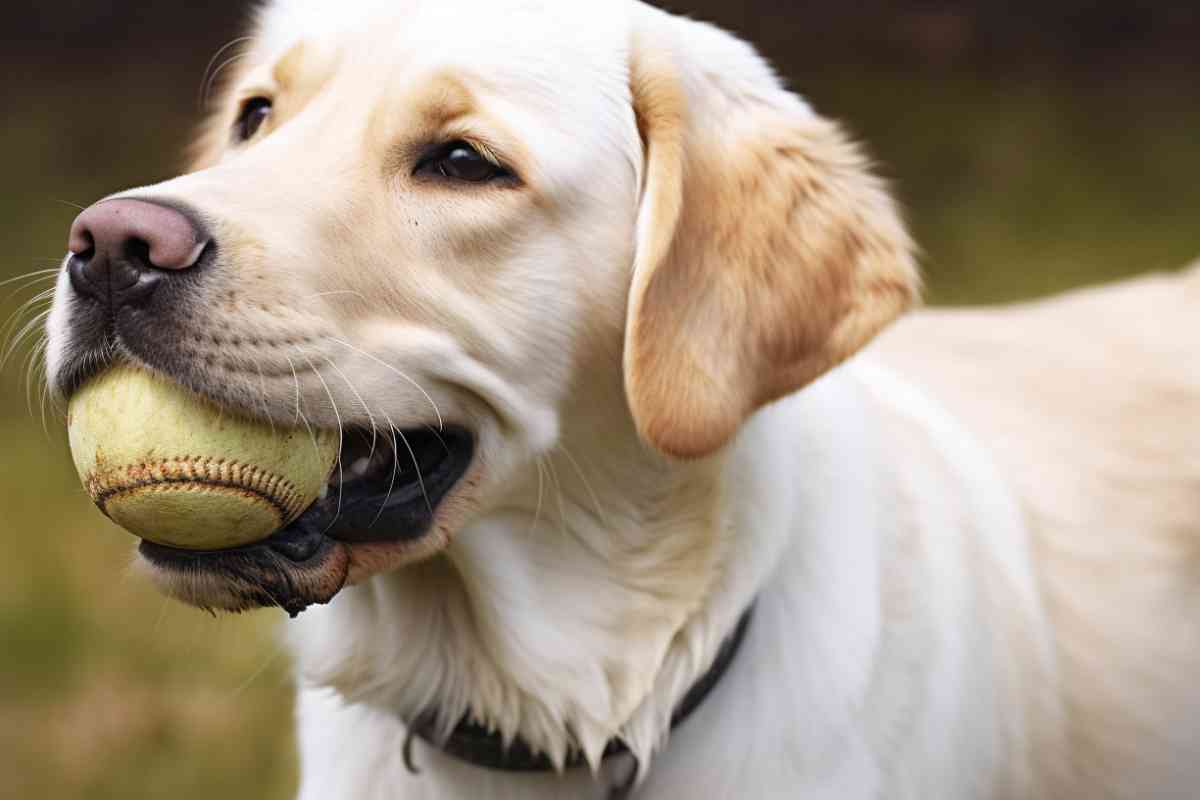
Food Enrichment
Food enrichment is another avenue to explore for mental stimulation. Incorporating puzzle feeders or treat-dispensing toys can make mealtime a fun and mentally stimulating experience, encouraging them to work a little for their treats.
Enriching Their Environment
Lastly, it is vital to enrich their living environment. Providing varied experiences, introducing them to new scents, and changing their toys regularly can offer continuous mental stimulation, catering to the ever-curious nature of a Labrador.
Determining Whether Your Lab is Getting the Right Amount of Exercise
When to Limit Labrador Exercise: Recognizing the Signs
While ensuring a healthy adult Labrador lifestyle through regular exercise is essential, it is equally important to recognize when to limit the physical activities of your Labrador. Over-exercising can lead to a host of problems, making it crucial to identify the signs and know when to pull back.
Signs of Over-exercising
Dog owners should be vigilant about the signs of over-exercising, which include:
- Excessive panting that doesn’t subside quickly after the activity ends
- Limping or lameness, indicating potential strain on muscles or joints
- Reluctance to move or continue exercising, a clear sign of exhaustion
- Sore paws and pads, resulting from too much running or walking on hard surfaces
- Dehydration, characterized by an increased thirst and consumption of water
Age-Specific Considerations
It is important to tailor the exercise regimen according to the month of age of your Labrador. Puppies and senior dogs may require more moderated exercise routines to prevent over-exertion and ensure their safety.
Behavioral Indicators
Pay attention to behavioral changes in your Labrador, such as increased irritability or anxiety, which can be indicators of over-exercising. Maintaining a balanced exercise routine that includes periods of rest and relaxation is vital.
Health Conditions
Labradors with health conditions, especially those prone to hip dysplasia or arthritis, should have their exercise routines carefully monitored to prevent exacerbation of their conditions.

Signs that You are Over-Exercising Your Labrador
- Limping or Lameness: If your Labrador starts to limp or show signs of lameness during or after exercise, it could be a sign of over-exercising, potentially straining their muscles or joints.
- Excessive Panting: While it’s normal for dogs to pant after exercise, excessive panting that doesn’t subside relatively quickly after stopping the activity can be a sign of over-exertion.
- Reluctance to Move or Continue Exercising: If your Labrador suddenly stops and refuses to continue exercising, or shows reluctance to move, it might be a sign that they are exhausted and have been over-exercised.
- Sore Paws and Pads: Check your Labrador’s paws and pads for signs of wear and tear. Over-exercising can lead to sore paws and even injuries.
- Changes in Appetite: Over-exercising can sometimes lead to a decrease in appetite. If your Labrador is refusing food or eating less than usual after a heavy exercise session, it might be a sign of over-exercising.
- Dehydration: If your Labrador is excessively thirsty and seems to be drinking more water than usual, it could be a sign of dehydration, which is often a result of over-exercising.
- Behavioral Changes: Over-exercising can sometimes lead to behavioral changes such as increased irritability, anxiety, or even depression. If you notice any sudden behavioral changes in your Labrador, it might be worth considering whether they are being over-exercised.
- Muscle Stiffness: After a period of rest following exercise, if your Labrador shows signs of muscle stiffness or has difficulty getting up, it could be a sign of over-exercising.
- Vomiting or Diarrhea: In extreme cases, over-exercising can lead to gastrointestinal issues such as vomiting or diarrhea. If your Labrador experiences these symptoms after exercising, it is a clear sign of over-exertion.
- Increased Heart Rate: A significantly increased heart rate that doesn’t return to normal within a reasonable time after stopping the exercise can be a sign of over-exercising.

Signs Your Labrador Isn’t Getting Enough Exercise
Weight Gain
One of the most noticeable signs of insufficient exercise is weight gain. Labradors are prone to obesity, and a lack of physical activity can quickly lead to an increase in weight, which is detrimental to their health.
Restlessness and Hyperactivity
An under-exercised Labrador may exhibit signs of restlessness and hyperactivity. They might pace around the house, unable to settle down, indicating pent-up energy that needs to be burned off through physical activity.
Destructive Behavior
Insufficient exercise can lead to destructive behaviors. Labradors might start chewing furniture, digging up the garden, or engaging in other destructive activities as a way to expend their pent-up energy.
Barking and Whining
Excessive barking and whining can be signs of frustration stemming from a lack of physical activity. Dog owners should ensure that their Labradors have ample opportunities to exercise to prevent such behaviors.
Lack of Interest in Play
A Labrador that isn’t getting enough exercise might lose interest in play over time. They might not show enthusiasm for toys or games, indicating a lack of physical stimulation.
Sleep Pattern Changes
Changes in sleep patterns, such as sleeping more than usual or having trouble sleeping, can be signs of insufficient exercise. Regular physical activity promotes better sleep by helping to burn off energy during the day.
Exercise Needs of Senior Labs and Puppies
How Much Exercise Do Labrador Puppies Need?
When it comes to determining the right amount of exercise for Labrador puppies, there isn’t a one-size-fits-all answer. The amount of exercise a puppy needs can depend on various factors including its breed, size, and individual health conditions. Here, we delve into how you can gauge the right amount of exercise for your Labrador puppy.
Understanding Your Puppy’s Needs
It is essential to understand that too much exercise can be just as detrimental as not enough. Over-exercising a puppy, especially a large-breed one like a Labrador, can lead to joint and bone problems. However, the exact amount of exercise needed is a subject of debate, with no set formula available to calculate a puppy’s progress.
Veterinarian Dr. Patty Khuly notes that the confusion arises from a lack of scientific studies and a plethora of personal opinions. The reality is more complicated than having a chart that breaks down the exercise needs by breed and age.
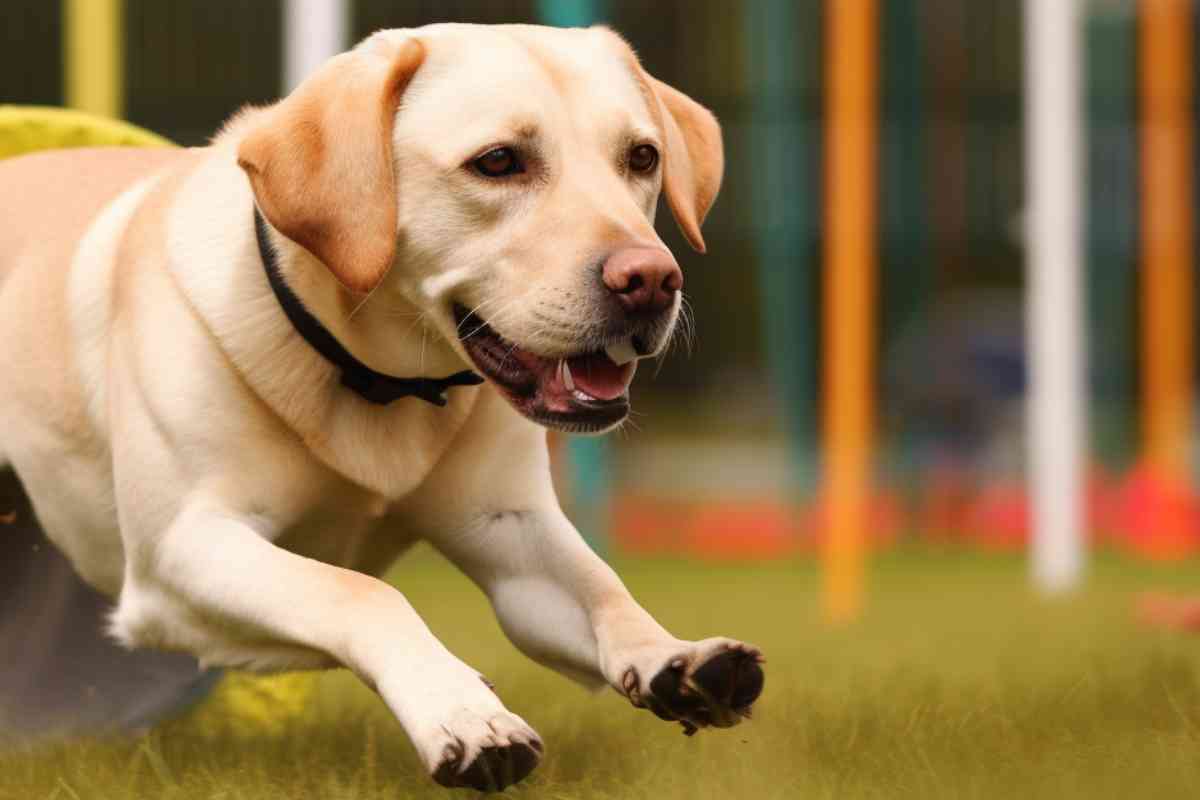
Breed-Specific Considerations
When planning an exercise routine for your Labrador puppy, consider its breed characteristics. Labradors are large-breed dogs, and studies have shown potential links between too much exercise and orthopedic diseases in large-breed dogs. Therefore, forcing a young Labrador for long walks daily is not advisable.
Understanding your breed’s growth rate is vital. Large and giant breeds like Labradors grow quickly but mature slowly, which means you might have to delay certain activities, such as agility training involving jumps, until they are fully grown.
Mental Stimulation
Apart from physical exercise, Labradors, being high-drive working breeds, require substantial mental stimulation. Incorporating training sessions and interactive toys into their exercise routine is as crucial as the physical exercise itself.
Safety Tips
To ensure your Labrador puppy’s safety during exercise, adhere to the following tips:
- Start with short walks, gradually increasing the length while taking frequent breaks.
- Avoid walks during extreme temperatures.
- Walk on safe surfaces to prevent injuries.
- Consult your veterinarian if you notice signs of lameness in your puppy.
Types of Exercise
Offer a variety of exercises to your Labrador puppy to prevent the risks associated with repetitive exercise. Consistency is key; maintain a regular exercise schedule to support your puppy’s growing body. Ensure at least three exercise sessions a day, including short walks and play sessions.
Labrador Activity Levels: Catering to the Senior Dog
As Labradors transition from being vibrant and energetic adult dogs to more serene senior dogs, their activity levels and exercise needs naturally decline. It is not uncommon for older Labradors to face health concerns such as arthritis and hip dysplasia, which can limit their mobility and the kind of exercises they can engage in.
Despite these challenges, it remains imperative for dog owners to ensure that their old Labs continue to get regular exercise to maintain a healthy lifestyle. Swimming emerges as a superb activity for older Labs, offering a low-impact yet effective way to help them stay fit and active. The buoyancy of water reduces stress on their joints, making it a comfortable and enjoyable exercise option.
For those who prefer or are limited to land-based activities, a leisurely walk with the aid of a “help them up” harness can be a great solution. This harness supports them in maintaining stability and balance, allowing them to enjoy their walks without straining their bodies.
Moreover, puzzle toys stand as a fantastic alternative to physical activities, offering mental stimulation while also encouraging physical engagement to a certain extent. These toys can keep a senior dog occupied, challenging their minds while satisfying their innate curiosity and playfulness.
It is essential to approach the exercise routine of a senior Labrador with sensitivity and understanding, recognizing their limitations while still encouraging them to lead an active and fulfilling life. Remember, the goal is to nurture a happy and healthy adult Labrador, adapting to their changing needs as they age gracefully.
Exercise Routines for Labrador Retrievers
As we conclude this exploration of Labrador activities, it is evident that the options are vast and vibrant, promising a world of joy and bonding.
The key to a happy Labrador lies in a harmonious blend of physical engagement and mental stimulation, a nurturing dance that caters to both body and spirit.
Armed with this knowledge, you are set to foster a balanced, joyful, and healthy lifestyle for your Labrador, nurturing a bond that is built on love, mutual respect, and shared happiness.

![How Many Litters Can A Golden Retriever Have? [Safely] 15 How Many Litters Can A Golden Retriever Have? [Safely]](https://retrieveradvice.com/wp-content/uploads/2022/05/How-Many-Litters-Can-A-Golden-Retriever-Have-768x512.jpg)



